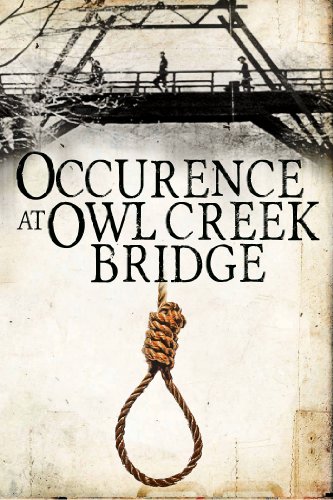





How Green Was My Valley [1939] by Richard Llewellyn – ★★★★★
“Beautiful were the days that are gone, and O, for them to be back. The mountain was green, and proud with a good covering of oak and ash, and washing his feet in a streaming river clear as the eyes of God” [Richard Llewellyn, Penguin Books, 1939/2001: 153].
This absorbing story is told through the perspective of a small boy and then young man living in a close-knit mining community in Wales during the reign of Queen Victoria. Huw Morgan grows up in changing times and in a family of many other children and plenty of role models. The Morgan family experiences both good and bad times, enduring their daily struggles with their coal employers and the rise of labour unions, but still finds happiness of living so united, peacefully abiding by the laws of the Church and being surrounded by the primordial beauty of nature. Huw makes enemies and friends, both in school and in a wider community, and finds out about friendship, duty, shame, guilt and justice, as well as, later, the value of honest work, and torments and confusion of first love. Permeated with much emotion and with that quiet, poetic and resolute conviction, How Green Was My Value is a heart-felt, bitter-sweet and nostalgic literary masterpiece, a one-of-kind homage to the innocence lost and to Wales that is no more.
Essentials of Classic Italian Cooking [1992] by Marcella Hazan – ★★★★★
“There is no such thing as Italian haute cuisine because there are no high or low roads in Italian cooking. All roads lead to the home, to la cucina di casa – the only one that deserves to be called Italian cooking” [Marcella Hazan, Knopf Publishing, 1992: 5].

This book distils and explains the fundamentals of Italian cuisine, first talking about its essential components, technique, equipment and products (extra virgin oil, tomatoes, parmesan, etc.), and later focusing on typical Italian menus, from appetizers (eggplants, peppers, bruschetta) to desserts (rice and almond cakes, gelato, croccante and biscuits). Italian food and cooking traditions vary depending on a region, and, thus, historically have been shaped by specific climate and natural conditions. So, food and cooking traditions of Naples will differ from that in Rome or Venice.
From Genoese-invented pesto, Tuscan-style zucchini rounds and soups to focaccia, meat-based dishes, pizza and risotto, Hazan explains each dish, its history where appropriate, and provides many recipes. For example, the reader will learn the intricacies of cooking pasta al dente, how difficult it is to prepare a really good Italian potato salad, and that “for a quarter of a millennium in the Veneto and…in much Lombardy it was polenta (a dish of boiled cornmeal) more than any other food that sustained life” [Marcella Hazan, Knopf Publishing, 1992: 273]. My favourite chapter was the one that talked about desserts. Hazan introduces zuccotto, a dome-shaped Italian dessert which has its origins in Florence; monte bianco, “a pyramid of dark chocolate and pureed fresh chestnuts, topped by a snowy peak of whipped cream” [1992: 583]; and sgroppino, an Italian cocktail mix, consisting of lemon ice-cream, cold pureed strawberries and sparkling wine.
Marcella Hazan (1924 – 2013) was a much esteemed culinary teacher and author who published a number of books on the food and cooking traditions of Italy. Born in Italy, she later moved to New York and then to Florida.
Accidental Death of an Anarchist [1970] by Dario Fo – ★★★★★

This play is based on the 1969 Piazza Fontana bombing incident in Milan, when 17 people were killed and 88 other injured. The police actions to secure convictions meant that an anarchist group was suspect and one of their interrogated, but eventually proved innocent, members “fell” to his death from a police station’s window in Milan. The play opens with the interrogation of the “Maniac” by Inspector Bertozzo and a Police Constable. The Maniac is one hyperactive and manipulative person who in this play gets the role of an outsider and a clown, close to insanity, but armed with the “truth”, or at least all the tools to get to the truth. Despite impersonating dozens of people previously and being committed to asylums numerous times, the Maniac is still to receive his first criminal conviction. When a rumour spreads that a High Court judge from Rome will soon arrive to get to the bottom of the mysterious death of an anarchist who “fell” from the fourth floor of a police station, the Maniac does not waste any time starting to show off his talents.
What follows is a clever farce, deeply sad, outrageously hilarious: normal “modes” of thinking are disrupted, and impersonations within impersonations occur. What are the facts? Can we rewrite the “established” truth to get to the “real” truth? The Maniac certainly thinks so. In a few lines, all hell breaks loose, but the world will be restored once again in a few lines that follow shortly. Echoing Gogol’s play The Government’s Inspector [1836], this play by Fo is a fine example of a tragicomedy, calling out the authorities’ hypocrisies, corruption and abuse.
Dario Fo (1926 – 2016) was an Italian playwright, theatre director and actor, whose work was often inspired by the Italian Commedia dell’ Arte. He received his Nobel Prize for Literature in 1997, with the Committee distinguishing him as a person who “emulates the jesters of the Middle Ages in scourging authority and upholding the dignity of the downtrodden“.
The Ladies’ Paradise [1883/1995] by Émile Zola – ★★★★1/2
Though I criticised the romance in this book, this classic novel is still one of the best I have read so far this year. Zola’s descriptive elements, as well as his insights into Parisian capitalism of the 1850-1860s, are particularly impressive – see full review.
Last Night at the Viper Room: River Phoenix and the Hollywood He Left Behind [2013] by Gavin Edwards – ★★★★
This was a good biography of American actor River Phoenix, which also looked at the whole Hollywood scene at that time of his demise outside of Johnny Depp-owned club The Viper Room on 31 October 1993. From his unusual childhood and music band aspirations to his Hollywood success, the book covers all the major events in River’s life, including his major films, experimentations with drugs and environmentalism. River’s unorthodox, partly traumatic past had a say in what he eventually became and the-relaxed-regarding-drugs Hollywood scene of the 1980s and late 1990s was a contributing factor. River was a natural, instinctive actor with a great talent, and more importantly, with that “unique-something” few actors actually possess.
An Occurrence at Owl Creek Bridge [1890] by Ambrose Bierce – ★★★★
“Death is a dignitary who when he comes announced is to be received with formal manifestations of respect, even by those familiar with him” [Penguin Books, 1890/1995: 2]. This short story is about the hanging of planter Peyton Farquhar at a railroad bridge in Alabama, which proved to be a strange occurrence, indeed. This is a very vivid tale of what seems to be one very unlikely eventuality, and the story culminates in one unexpected ending. Ambrose Bierce was an American writer and journalist who mysteriously disappeared in Mexico in 1914.


How Green Was My Valley Sounds like a Novel I should have read by now. I know I’d enjoy it. I remember reading “Occurance at Owl Creek Bridge” years ago and liking it very much.
LikeLiked by 1 person
I highly recommend How Green Was My Valley. It is easily one of the best books I’ve ever read, my instant favourite, so transportive and definitely one of those books that stays with you.
LikeLiked by 1 person
That’s high praise indeed!
LikeLike
How Green Was My Valley is also one I should have read, but haven’t. Maybe your review is the spur I’ve been waiting for.
LikeLiked by 1 person
I grew up in South Wales so Richard Llewellyn and Alexander Cordell were my everything. It’s so lovely to see this beautiful book get an outing. Thank you Diana.
LikeLiked by 1 person
I haven’t read any of these books but I’m familiar with Dario Fo and his great plays. He was also an incredibly important figure in Italy in general. Reading your summaries I think I would like all of them, but I’m particularly curious to read the Essentials of Classic Italian Cooking! I think it will definitely remind me of my childhood and the dishes I used to eat! It also reminded me of a book I read 2-3 years ago called “Serendipity”, it was written by the founder of the Eataly brand and talks about some dishes that were created by accident – and many of them are Italian!
LikeLiked by 1 person
Thanks, I will have to look up “Serendipity”, sounds like fun!
LikeLiked by 1 person